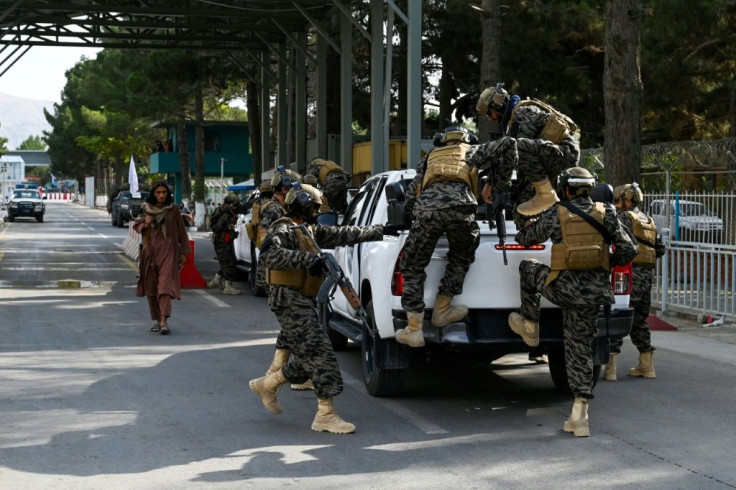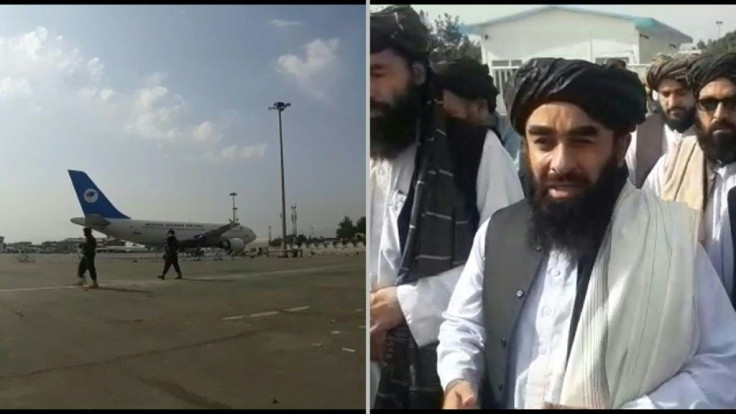Taliban Celebrate Victory Where Last US Troops Departed
Hours after the final foreign forces flew out of Afghanistan, a group of Taliban leaders walked victorious through the airport, flanked by their elite "Badri 313" guards, to inspect what had been left behind.
Taliban spokesman Zabihullah Mujahid -- tipped to be minister of information when a new government is named -- led a group of officials onto the runway, his usual stoic expression replaced by a broad grin.
The special forces unit posed for pictures, brandishing US M-16 rifles and flying the Taliban's white flag.

The atmosphere was one of triumph and victory, but all around was evidence of the chaotic withdrawal of US troops after a 20-year occupation, and the hurried evacuation of more than 120,000 people fearful of the Taliban's return to power.
Once one of the most secure sites in Afghanistan, the airport's passenger terminal was trashed.
Dozens of vehicles in the carpark had been tipped onto their sides by US troops to form barriers against the tens of thousands of people who besieged the airport in the last two weeks in the hope of catching an evacuation flight out.
Doors and windows were broken, and thousands of bullet casings littered the ground -- the result of shots being constantly fired into the air to control crowds.

Hundreds of metres of razor wire snaked around, torn patches of clothing testimony to the desperation of those who tried to clamber through.
Across the runway, on the military side of the facility, dozens of planes stood empty, wrecked by American forces in a final act before they flew away.
US Central Command head General Kenneth McKenzie said 73 aircraft were "demilitarised," or rendered useless, before American troops wrapped up the two-week evacuation.
He said the Pentagon, which built up a force of nearly 6,000 troops to occupy and operate Kabul's airport when the airlift began on August 14, left behind around 70 MRAP armoured tactical vehicles -- which can cost up to $1 million a piece -- that it disabled before leaving, and 27 Humvees.

Before the last US troops left, they disabled scores of aircraft and armoured vehicles -- as well as a high-tech rocket defence system -- at the airport, a US general said.
Cockpit windows had been shattered, instrument panels smashed, and aircraft tyres shot out.
The US also left behind but disabled the C-RAM system -- counter rocket, artillery, and mortar -- that was used to protect the airport from rocket attacks.
The system helped fend off a five-rocket barrage from the jihadist Islamic State group on Monday.
Surveying the damage, Mujahid admitted it would take time to get the airport back up and running again.
Mujahid gave it no more than a second glance.
"We have a lot of work to do," he said.
burs-fox/pjm/jds/mtp
© Copyright AFP {{Year}}. All rights reserved.





















